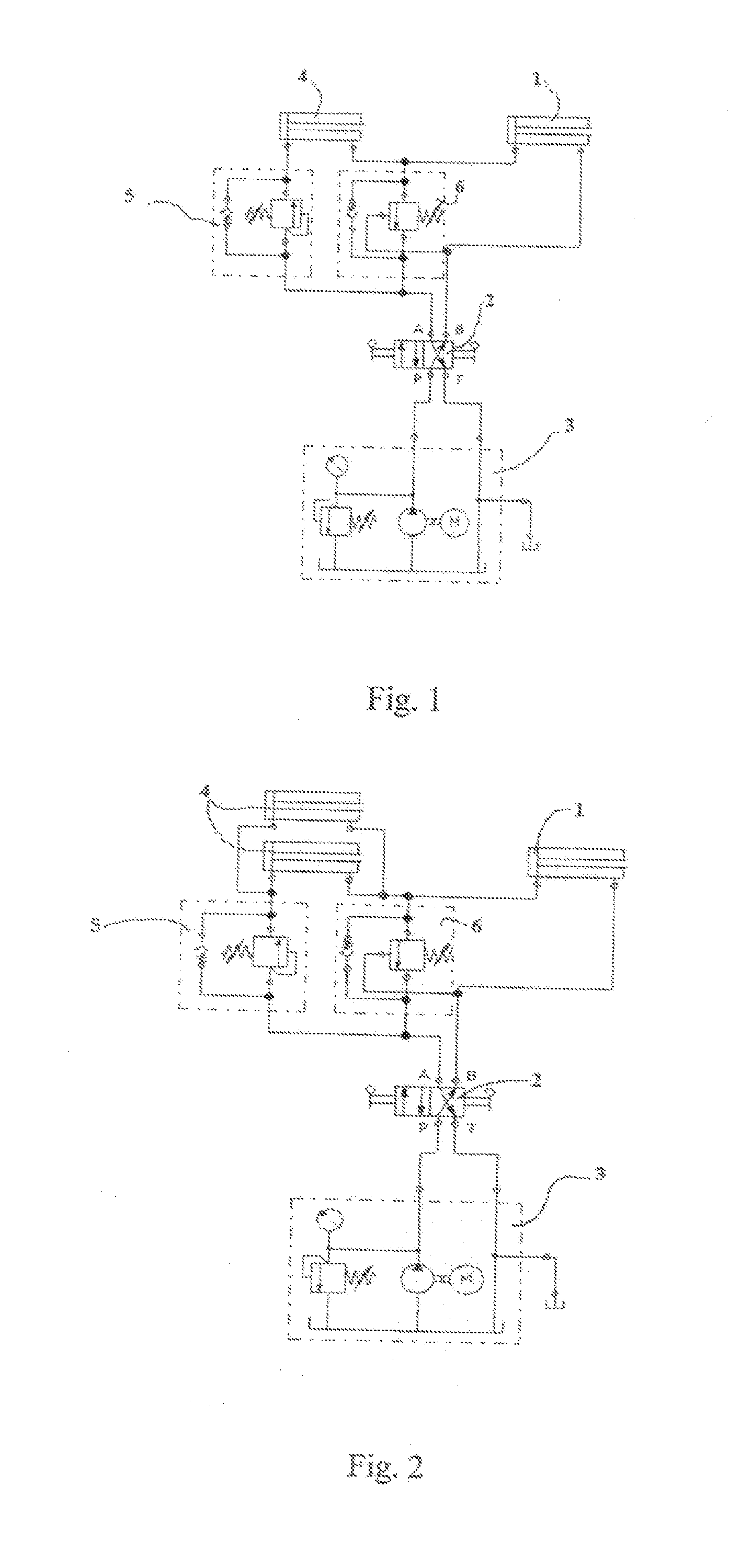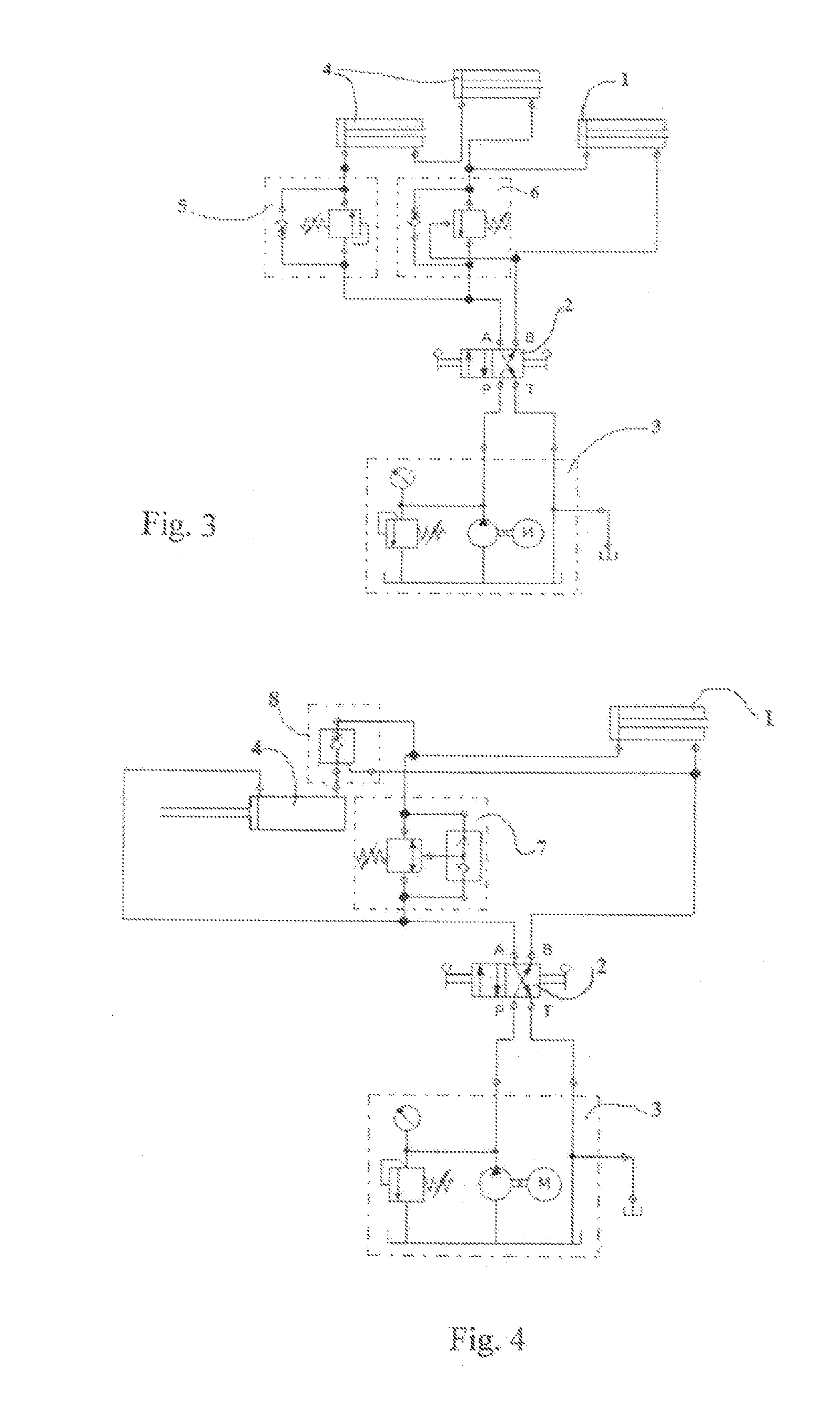Pressure Transformation Method and Device for its Implementation
a technology of transformation method and pressure transformation device, which is applied in the direction of couplings, mechanical equipment, brake systems, etc., can solve the problems of reducing the efficiency of high-pressure systems, affecting the reliability of high-pressure systems, and increasing manufacturing and maintenance costs, so as to improve the reliability of operation and speed up the speed of travel , the effect of increasing the pressur
- Summary
- Abstract
- Description
- Claims
- Application Information
AI Technical Summary
Benefits of technology
Problems solved by technology
Method used
Image
Examples
Embodiment Construction
[0024]The figures show by means of examples various connections into hydraulic systems according to the invention. They include the following parts or elements: hydraulic cylinder 1, directional control valve 2, hydraulic power unit 3, pressure transformation cylinder 4, sequence valves 5, 6, 7 and check valve 8.
[0025]Valves 5, 6 and 7 are generally called sequence valves, because the valves phase the operations. Valves in accordance with the figures can be suitably engineered of commonly known components, but it is possible to engineer the same phasing operations with various suitably known arrangements.
[0026]FIG. 1 shows a pressure transformation device in which a pressure transformer 4 increases pressure for the ratio of areas to a hydraulic cylinder 1 being the actuator. Furthermore, the figure shows a sequence valve 5 and a pilot-controlled sequence valve 6 to control the operation of the pressure transformer 4. The figure also shows a directional control valve 2 and a hydrauli...
PUM
 Login to View More
Login to View More Abstract
Description
Claims
Application Information
 Login to View More
Login to View More - R&D
- Intellectual Property
- Life Sciences
- Materials
- Tech Scout
- Unparalleled Data Quality
- Higher Quality Content
- 60% Fewer Hallucinations
Browse by: Latest US Patents, China's latest patents, Technical Efficacy Thesaurus, Application Domain, Technology Topic, Popular Technical Reports.
© 2025 PatSnap. All rights reserved.Legal|Privacy policy|Modern Slavery Act Transparency Statement|Sitemap|About US| Contact US: help@patsnap.com



